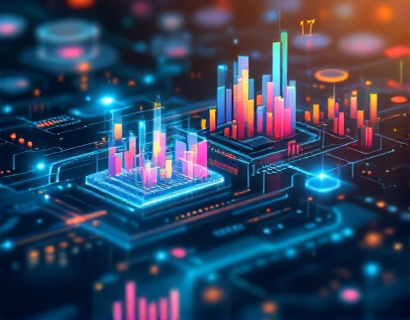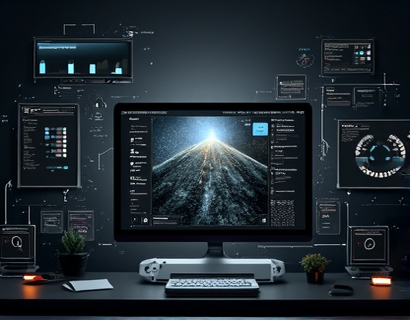Maximizing Civic Engagement: Leveraging Real-Time Data for Transparent Governance
In the digital age, the intersection of technology and governance has opened new avenues for civic engagement. Real-time data access stands as a pivotal tool in this transformation, offering unprecedented opportunities for citizens to participate in the democratic process. This article explores how open access to government data can revolutionize civic engagement, enhance accountability, and foster a more transparent and collaborative governance model.
The Importance of Real-Time Government Data
Real-time government data refers to the immediate and continuous availability of information generated by government entities. This data encompasses a wide range of areas including budget allocations, public service delivery, environmental metrics, and policy implementations. The significance of real-time data lies in its ability to provide citizens with up-to-the-minute insights into government operations, thereby bridging the gap between the public and those in power.
The traditional model of government data release, often delayed and aggregated, leaves citizens in the dark about critical decisions and actions taken by their representatives. Real-time data changes this dynamic, offering a window into the inner workings of government, making it possible for citizens to monitor and engage with policy-making processes as they unfold.
Enhancing Accountability Through Open Data
One of the most profound impacts of real-time government data is the enhancement of accountability. When citizens have access to timely and detailed information, they can more effectively scrutinize government actions and hold officials accountable for their decisions. This transparency acts as a deterrent against corruption and mismanagement, as officials are aware that their actions are under constant scrutiny.
Real-time data also facilitates the creation of watchdog platforms and citizen monitoring initiatives. These platforms aggregate and analyze government data, providing easy-to-understand reports and alerts on potential issues. By empowering citizens with the tools to monitor government performance, real-time data fosters a culture of accountability and responsible governance.
Real-Time Data and Informed Citizen Participation
The availability of real-time data significantly enhances the quality of civic engagement. Informed citizens are better equipped to participate in democratic processes, from local elections to national referendums. With immediate access to relevant data, citizens can make more informed decisions, contribute to public debates, and advocate for policies that align with their values and needs.
For instance, real-time data on public spending can help citizens understand where their taxes are going and whether funds are being allocated efficiently. This transparency encourages public discourse and can lead to more informed voting patterns. Similarly, real-time data on environmental metrics can mobilize citizens to take action on issues like pollution and climate change, fostering a more engaged and proactive community.
Real-Time Data and Public Service Improvement
Real-time data not only benefits citizens but also improves the delivery of public services. Government agencies can use real-time data to monitor service performance, identify bottlenecks, and make data-driven decisions to enhance efficiency and effectiveness. This proactive approach ensures that public services are responsive to the actual needs of the community.
For example, real-time data on public transportation can help city planners optimize routes and schedules based on current demand, reducing wait times and improving overall service quality. In healthcare, real-time data on hospital admissions and resource utilization can help manage patient flow and allocate resources more effectively, leading to better patient outcomes.
Technological Enablers of Real-Time Data
The realization of real-time government data relies on advanced technological infrastructure. Key enablers include robust data collection systems, high-speed internet connectivity, and sophisticated data analytics tools. Governments must invest in these technologies to ensure that data is collected, processed, and disseminated in real time.
Open data platforms play a crucial role in making government data accessible to the public. These platforms provide a centralized repository where citizens can search, download, and analyze data. By adhering to open data standards, governments can ensure that data is machine-readable and easily integrable with third-party applications, fostering innovation and further enhancing civic engagement.
Case Studies: Successful Implementation of Real-Time Data
Several cities and countries have successfully implemented real-time data initiatives, demonstrating the positive impact on civic engagement and governance. For example, the city of Barcelona has developed an open data portal that provides real-time information on various city services, including public transportation, waste management, and energy consumption. This portal has not only increased transparency but also spurred the development of citizen apps that improve the quality of life for residents.
In another instance, the city of New York launched NYC OpenData, a comprehensive platform offering real-time data on topics such as crime statistics, budget expenditures, and environmental quality. This initiative has empowered citizens to track city performance and engage in meaningful discussions about policy improvements.
Challenges and Considerations
While the benefits of real-time data are clear, there are challenges that need to be addressed to ensure successful implementation. Privacy and security concerns are paramount, as the release of real-time data must not compromise sensitive information. Governments must establish strict data protection measures and comply with privacy regulations to build public trust.
Another challenge is the digital divide, where not all citizens have equal access to the internet and digital tools. To maximize the impact of real-time data, governments should invest in digital literacy programs and expand internet access, ensuring that all citizens can benefit from these initiatives.
Moving Forward: A Call to Action
The potential of real-time data to transform civic engagement and governance is immense. By embracing open data, governments can foster a more transparent, accountable, and participatory democracy. Citizens, in turn, can leverage this data to make informed decisions, hold officials accountable, and contribute to the betterment of their communities.
It is time for a collective movement towards a more open and collaborative governance model. We urge policymakers, technologists, and citizens to join forces in this endeavor, creating a future where real-time data is a cornerstone of democratic processes. Together, we can build a government that is not only responsive to the needs of its citizens but also actively collaborates with them to create a better society for all.










































